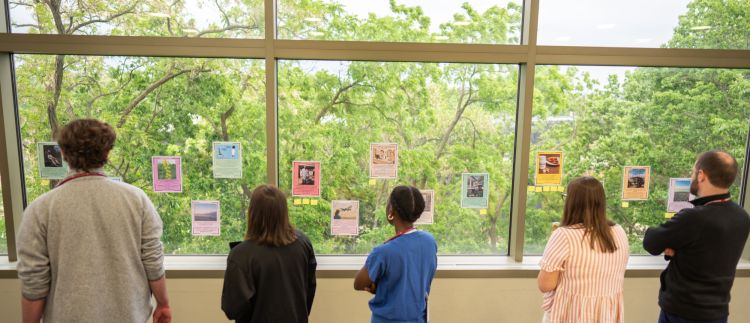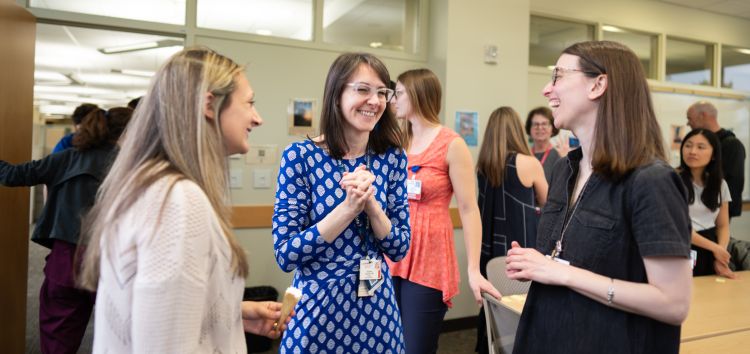Tiny stories, big impact
Narrative medicine project connects residents

“In 55 words or less, share a story about a time during residency that was humbling, stressful, relatable, rewarding or difficult. Include a photo.”
That’s the prompt Marissa LoCastro, MD, PG-2, sent to her fellow residents, attending faculty, and fellows across the University of Wisconsin Department of Medicine (UW DOM) this spring, as part of a project called Tiny Story.
The 57 stories she collected express the full range of the trainee experience: bleak, funny, heartfelt, grieving, frustrated, mundane, absurd.
Each was printed, laminated and recently displayed at an ice cream social for DOM faculty and trainees.
“People have told me that they've enjoyed them because they carry so many of the same stories,” Dr. LoCastro says. “And that’s the whole premise of the project. Stories connect us better than anything else.”
Stories connect us better than anything else.
Marissa LoCastro, MD
She elaborates in the video below.
Compassion and communication
Early in her first year of residency, Dr. LoCastro encountered an angry patient. Angry with her. “I left and immediately started thinking I was the worst doctor ever,” she recalls.
But she quickly realized she wasn’t alone.
“We’re always internalizing the things that happen to us as residents. Unless someone else is willing to say it happens to them, too, it must only happen to us.”
So she created the Tiny Story project, drawing inspiration from narrative medicine techniques learned in medical school and funding from a David Sunde Humanitarian Award (given annually to one or more internal medicine residents pursuing projects that enrich humanism among DOM learners).
We’re always internalizing the things that happen to us as residents. Unless someone else is willing to say it happens to them, too, it must only happen to us.
Dr. LoCastro
The project is an excellent example of how humanities-based techniques can foster compassion and communication in graduate medical education.
“I hope that part of the takeaway for the residents was to offer themselves the same compassion they offer to their patients and colleagues,” adds Abigail Mapes, MA, graduate medical education program manager.
Faculty engagement
While roughly 60% of the stories came from other residents (and one fellow), plenty came from faculty—including from the program’s director, Andy Coyle, MD, associate professor, General Internal Medicine, and from Department Chair Lynn Schnapp, MD, George R. and Elaine Love Professor.
“A lot of residents commented on how impactful it was for someone so high in our leadership to write something vulnerable,” Dr. LoCastro notes. “We don’t get to talk to our attendings about this kind of stuff. We just see them in these successful roles.”
For faculty, too, the stories can be an evocative, edifying trip down memory lane.
“They reminded me of how stressful, humbling, sometimes ridiculous, and nonetheless wonderful it is to be a physician, particularly during those formative years,” says Elizabeth Chapman, MD, clinical associate professor, Geriatrics and Gerontology. “I’m very grateful for the effort Dr. LoCastro put into collecting them and creating a venue to share them.”
They reminded me of how stressful, humbling, sometimes ridiculous, and nonetheless wonderful it is to be a physician, particularly during those formative years.
Elizabeth Chapman, MD
Where to read
The stories will be gathered and bound in a book for the residency library in University Hospital.
Banner: trainees and faculty gathered to read the stories during an ice cream social. Photo and video credit: Clint Thayer/Department of Medicine.
